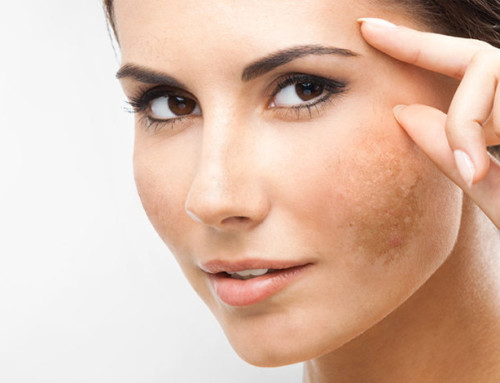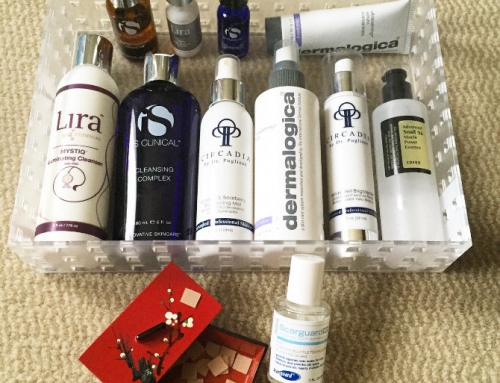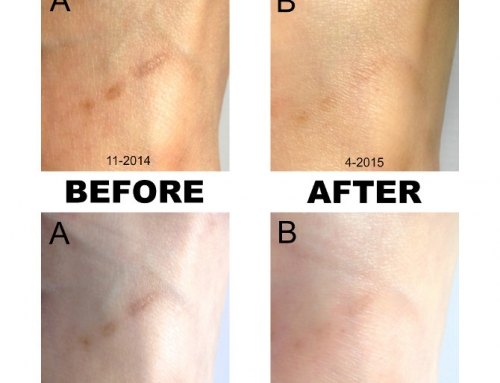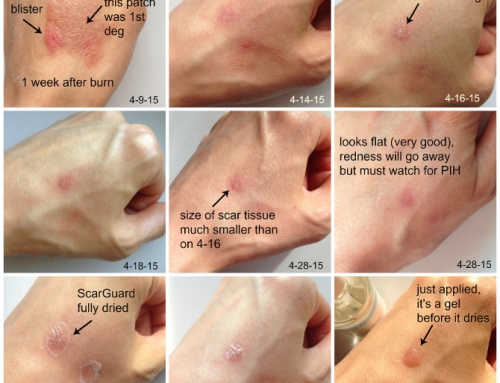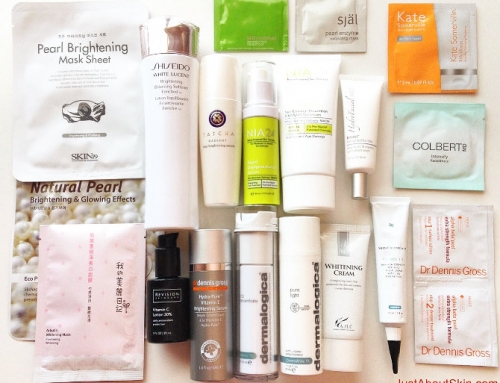How many of you have spots? Like yours or do you wish they’d go away? Spots are my toughest skin issue. Like most people, I have some hyperpigmentation on my face (dark spots on cheeks and nose).
I’ll be talking about hyperpigmentation for the next few posts. It’s a topic many of you have asked me about.
First off, let’s understand what it is. Hyperpigmentation means an excess or overproduction of pigment.
It is one of the most difficult conditions to treat in skin care. For good reason – there are multiple mechanisms that produce spots or discoloration. So treating it requires knowing which mechanism caused it in the first place. Quite often, a treatment product doesn’t work because it’s not targeting the root cause.
Today, let’s first learn about the different types of hyperpigmentation. It can be confusing and difficult to differentiate spots.
In order to treat hyperpigmentation effectively, you need to know what type it is. Otherwise, you could be wasting your time using the wrong ingredients or methods.
Types of Hyperpigmentation
Freckles
Most of us can recognize freckles. They are clusters of spots that appear mostly across the upper cheeks and nose at a very young age (when we’re children). They are flat and circular. The people in this picture have freckles.
Freckles are mostly a genetic condition. But sun exposure and other environmental factors can darken freckles. Freckles tend to fade in the winter, whereas other forms of hyperpigmentation do not.
The medical term for freckles is Ephelides or Lentigenes.
Sun Spots
Sun spots are dark spots (usually brown) induced by sun exposure. In other words, photo damage. The sun stimulates the production of melanin, the pigment responsible for producing color in skin. These spots form after years of exposure to the sun.
Sun spots are flat, discrete spots, usually on the cheeks, nose, and forehead. They are also common on the back of hands, arms, and decollete. Unlike freckles, they do not fade in the winter.
Sun spots are often called Dark Spots or Brown Spots in product claims and the beauty industry.
Sun spots are sometimes called Liver Spots. This name is misleading though. Liver spots have nothing to do with the liver. Liver spots are not a good term to use; I never use this term.
Sun spots are also called Age Spots. This is also confusing because it’s not necessarily related to age, though we do tend to get more spots with age. UVA damage from early years of sun exposure often shows up as spots later on in life.
When I use the term Age Spots, I mean spots resulting from a different pigment, lipofuscin (discussed below).
The medical term for spots resulting from sun exposure is Solar Lentigenes.
The medical term for age-related spots is Senile Lentigenes.
Age Spots
As I mentioned above, the term Age Spots is confusing and often misused. Age spots are actually spots that result from a cellular waste pigment, called Lipofuscin, which is a totally different pigment from melanin. But most people in the industry say Age Spots when they mean Sun Spots.
Lipofuscin is due to an accumulation of cellular garbage that comes with age. It is oxidized skin lipid that turns yellow or brown. You can read more about how cellular garbage ages skin here.
It is hard to tell the difference between sun spots and age spots with the naked eye. But special UV light scopes can differentiate different types of spots.
Post-Inflammatory Hyperpigmentation (PIH)
This kind of spotting or discoloration is due to inflammation caused by trauma to the skin.
Things that can cause post-inflammatory pigmentation:
- cystic acne or healing pimple
- cosmetic procedures – lasers, IPL, microdermabrasion
- deep chemical peels
- chemical exfoliants – AHA’s and other acids
- overuse of certain ingredients (e.g. Benzoyl Peroxide)
- mechanical trauma – a wound that leads to a scar or discoloration
- anything that causes excessive irritation
Post-inflammatory hyperpigmentation can occur in any skin type but is more common in Fitzpatrick Skin Types 4-6, which are darker skin tones. (See Fitzpatrick Skin Type Scale to find your type.)
If you are black, Asian, Hispanic, Indian, Middle Eastern, Mediterranean, or mixed race, please read these important precautions here. You need to be extra careful about exfoliation, cosmetic procedures, and wound care, because your skin is more likely to pigment (and scar) afterward.
Melasma
Melasma is hormonally-induced pigmentation, and occurs in about 70% of pregnant women. It is also known as pregnancy mask or chloasma.
This discoloration is due to pregnancy, birth control pills, changes in estrogen/estradiol/progesterone levels, thyroid dysfunction, and to a lesser extent, high stress.
With melasma, the pigmentation is generally symmetrical and has clearly defined edges. It occurs on the forehead, temples, cheeks, nose, upper lip, and chin, and sometimes neck & arms. But mostly in the central third of the face. This pattern is sometimes called a butterfly mask.
While it affects all races, melasma occurs most often in brown or olive skin tones.
Melasma is very difficult to treat with brightening ingredints and takes a long time to fade. It usually goes away gradually after pregnancy, but can linger on some people. It gets worse with sun exposure, so it’s important to wear sunscreen while treating melasma.
Stretch Marks
Stretch marks are permanent scars that result from skin that has been stretched by pregnancy.
It is not well understood and unfortunately is very difficult to treat.
Moles
A mole is a clearly defined spot that ranges in color from tan to black. Some are flat, some are raised. Some can have a hair, which is common. (Note: Hairs in moles should not be removed because they can cause irritation or change the mole’s structure.)
The #1 thing you need to know about moles is that they can be cancerous or become cancerous. Here is the American Cancer Society’s ABCDE checklist for recognizing a cancerous mole:
Mole ABCDE Checklist
A – Asymmetry – two sides of the mole are not identical
B – Border – the border is irregular
C – Color – the color is very dark, or there is more than one color
D – Diameter – the mole is larger than a pencil eraser
E – Evolving – the mole is changing its size, shape, elevation
It’s a good idea to check your moles regularly and see a doctor when you see changes.


